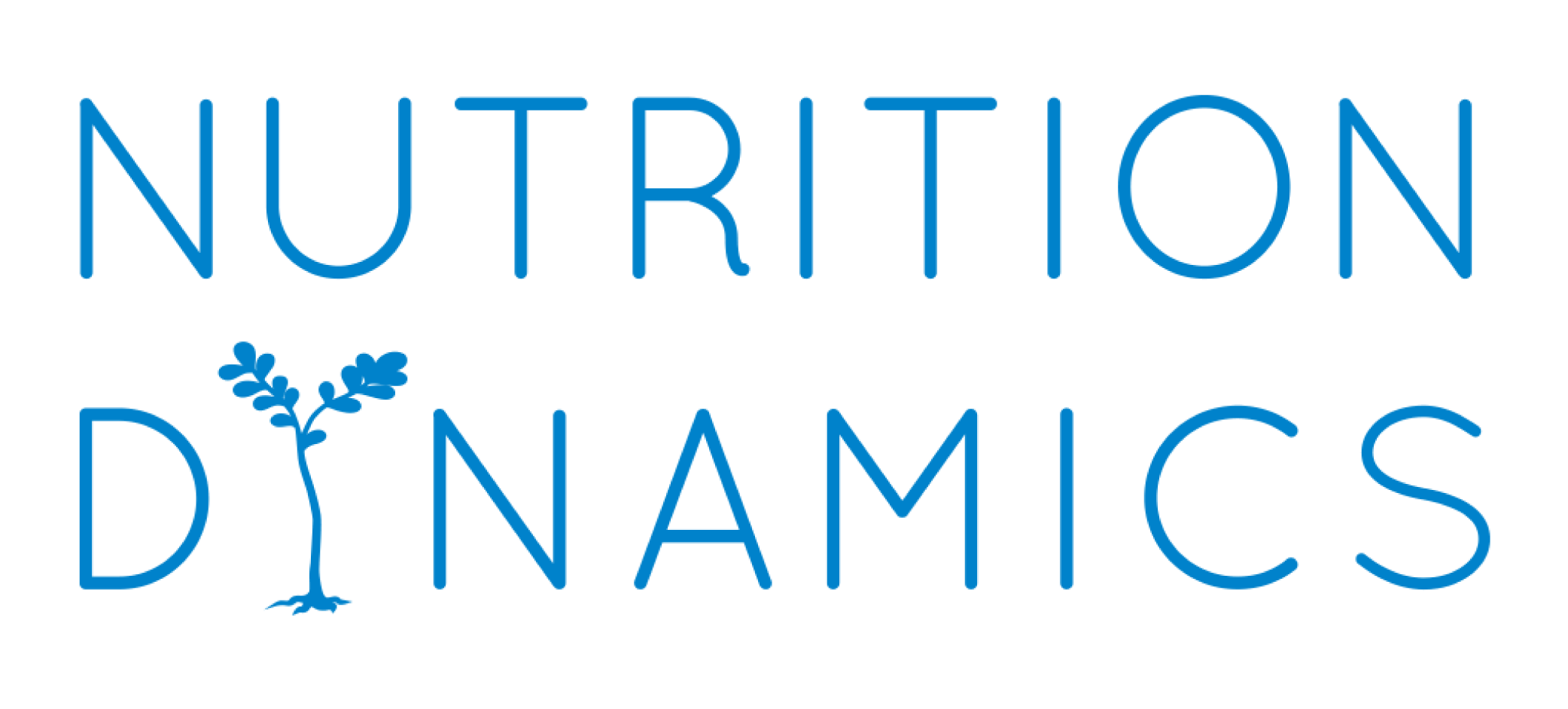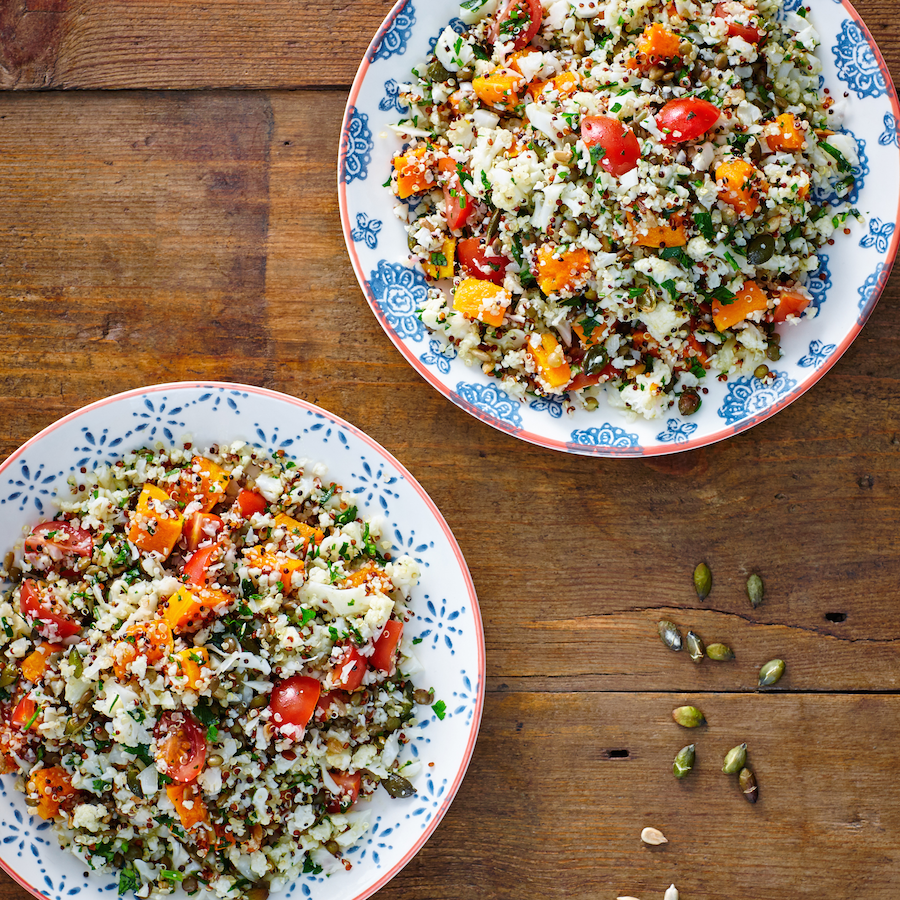For extra protein, especially if serving as a lunch dish, add the lentils.
Preparation: 20 minutes
Cooking time: 30 minutes
Serves 6-8 (depending on lunch dish or side dish)
500g butternut squash, peeled and cut into bite-sized chunks
1 tbsp olive oil
100g quinoa
75g Puy lentils (optional)
2 tbsp pumpkin seeds
2 tbsp sunflower seeds
1 medium cauliflower (approx 500g) cut into small florets
75g sunblush tomatoes
Handful mint leaves, chopped
Handful flat leaved parsley leaves, chopped
Dressing :
2 tbsp extra virgin olive oil
1 tbsp lemon juice
1 clove garlic, crushed
Seasoning
- Pre-heat the oven to 190C/170Cfan/gas 5. Toss the chunks of squash in the oil, season and transfer to a roasting tin, bake for 30 minutes until tender. Scatter the seeds on a separate baking tray then roast in the oven for 10 minutes until golden.
- Meanwhile, cook the quinoa as directed on the packet for 10 minutes then drain and cool. Cook the lentils in boiling water for approx 20 minutes until just tender, drain and cool.
- Bring a large pan of water to the boil and add the cauliflower, blanch for 2 minutes, refresh under cold water then drain. In batches transfer cauliflower to a food processor and blitz until it looks like rice.
- Tip into a large bowl, add all of the prepared ingredients, the sunblush tomatoes and herbs. Mix the dressing ingredients, add to the salad and toss everything together.
Tip
All the pre-cooking can be done in advance then assembled before serving.
What’s so good about this recipe?
Squash is a good source of the antioxidant beta carotene. Carotenoids are converted to retinoids in our bodies. This is the plant form of vitamin A and the chemical that gives it the vivid orange flesh. Butternut squash supplies a variety of nutrients in significant quantities such as Vitamin C, folic acid and potassium[1]
Cauliflower is part of the cruciferous family of vegetables, which all contain compounds that may help prevent cancer. Cauliflower is an excellent source of vitamin K and C, whilst also having a high fibre content and a source of boron and other minerals.[2]
Quinoa is a fantastic wheat and gluten free choice of all of the grains. It is technically a seed rich in amino acids so is a very good source of protein [2]. A versatile ingredient, quinoa can be used in both sweet and savoury dishes. A very good source of magnesium and manganese, containing three times as much magnesium as calcium. It also has good levels of vitamins B2, vitamin E and dietary fibre. Other trace minerals found in quinoa include iron, phosphorus, copper and zinc. Researchers have recently found that quinoa contains two antioxidant phytonutrients and two flavanoids – quercetin and kaempferol [3] that contribute to oxidative protection.
Pumpkin seeds supply a good variety of minerals, such as zinc, muscle relaxing magnesium, energy producing iron and phosphorus, free-radical scavenging manganese and copper. Zinc is an important mineral for bone mineral density and for a healthy immune system They are also a good source of vitamins A, B1, B2 and B3, protein, monounsaturated fats and phytosterols, particularly beta-sistosterol.
Nutritional Information
Per serving (based on 6 portions): Cals 376, Protein 17g, Carbohydrate 43g, of which sugar 6.6g, Total fat 15g, of which saturates 2.1g, Fibre 11g, Salt 0.4g.Share this Post

